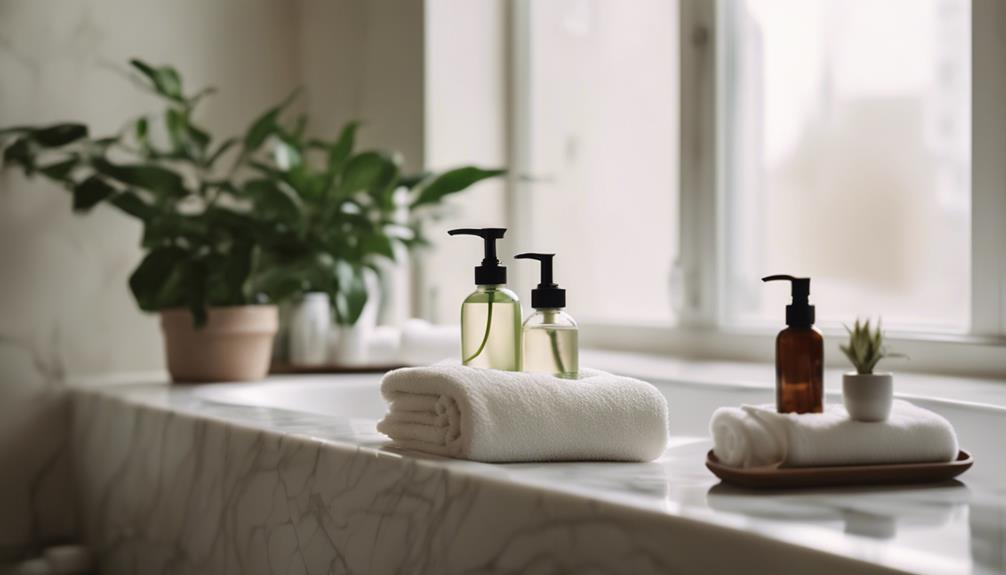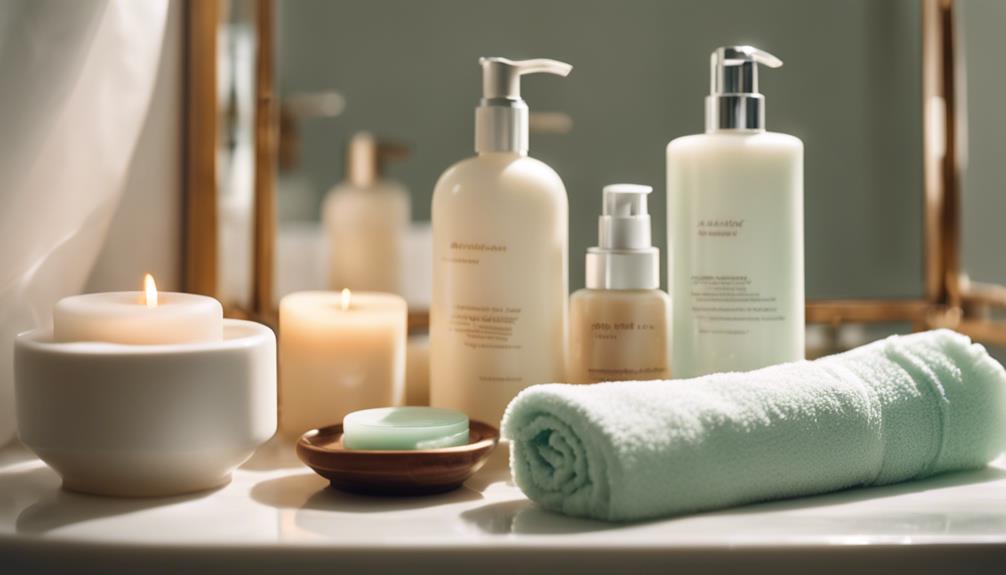Start your day by refreshing your face, beginning with a gentle morning cleanser to rid your skin of overnight impurities and prepare it for hydration. Then, apply a toner that suits your skin type to refine texture and minimize pores. Select a serum that targets your specific skin concerns, such as hydration or brightening. Remember to use an eye cream to address puffiness and fine lines. Complete your routine with a lightweight moisturizer containing SPF to shield your skin from harmful UV rays. By maintaining consistency and making suitable adjustments for each season, you can ensure that your skin remains vibrant throughout the day. There is more to discover in perfecting your skincare regimen.
Key Takeaways
- Start with a gentle morning cleanser to remove overnight impurities and maintain skin's moisture balance.
- Apply a toner suited to your skin type to refine texture and enhance serum absorption.
- Use a targeted serum with active ingredients like Vitamin C or hyaluronic acid for hydration and brightening.
- Incorporate an eye cream to reduce puffiness and minimize fine lines around the delicate eye area.
Morning Cleanser
A morning cleanser is vital for removing overnight bacteria and dead skin cells, setting the stage for a new start to your day. By incorporating a gentle cleanser into your skincare routine, you help maintain your skin's natural moisture balance while preparing it for the products that follow.
Dermatologist Dr. Vivian Bucay emphasizes that a proper morning cleanse can prevent clogged pores and breakouts, especially if you have acne-prone skin.
Using a revitalizing morning cleanser not only clears away impurities but also promotes hydration, ensuring your skin feels invigorated.
Look for products like Lancôme's Clarifique cleansing foam, which combines French beech bud extract and salicylic acid for an effective cleanse. This type of formula helps establish the ideal pH level (5.4-5.5), which is essential for ideal product absorption throughout your skincare routine.
Toner Application
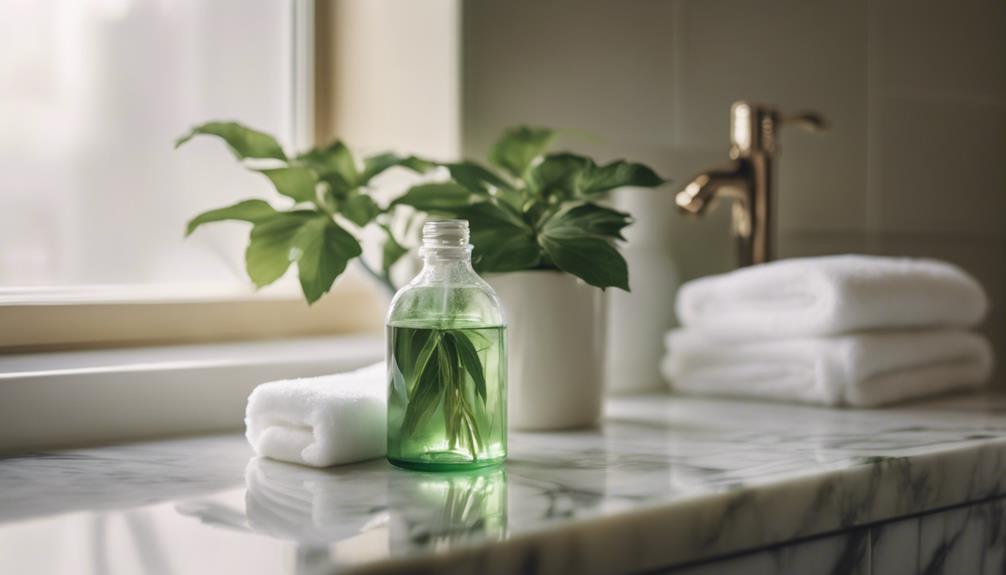
Using a toner after cleansing refines your skin's surface, promoting a smoother and more hydrated appearance crucial for the effectiveness of your skincare routine.
When you apply a toner, you're not just prepping your skin; you're also removing excess oil, dirt, and any leftover makeup residue from your cleanser. This step is essential for addressing dull skin and minimizing the appearance of large pores.
Choose a toner that aligns with your skin type and concerns. For instance, if you have acne-prone skin, a product like Lancôme's Unblemish Clarifying Toner can be remarkably effective.
On the other hand, if dryness is an issue, a hydrating toner can greatly boost moisture retention. This is especially important when applied before serums, as it enhances their absorption.
Choosing the Right Serum
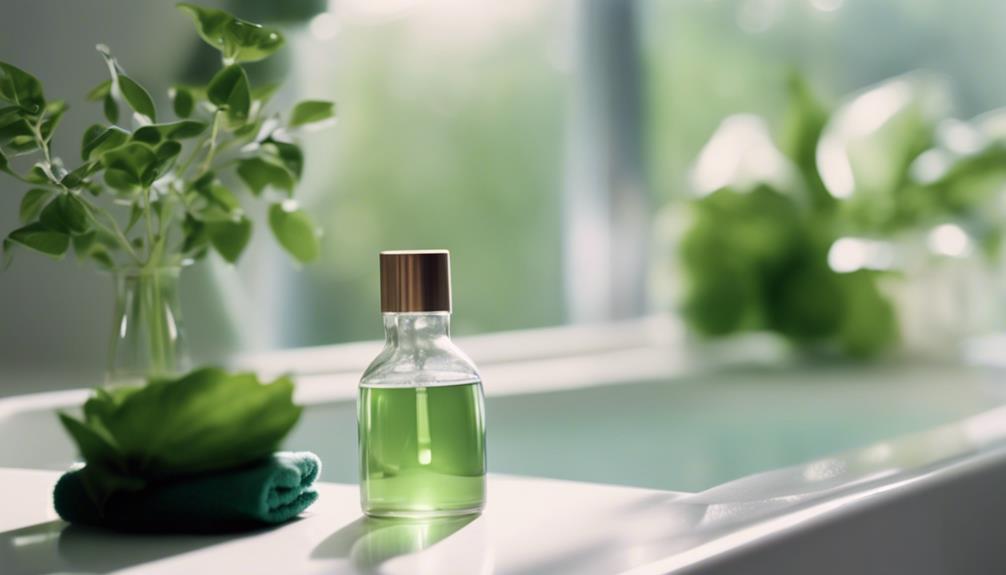
When you're picking a serum, it's important to take into account the types available and the key active ingredients they offer.
Focus on what your skin needs, whether it's hydration, brightening, or anti-aging benefits.
Understanding how to apply these serums effectively can make a significant difference in your skincare routine.
Types of Face Serums
Choosing the right face serum involves understanding your skin's specific needs and matching them with the right active ingredients.
If you're looking to address hydration, consider a hydrating serum rich in hyaluronic acid or glycerin. These ingredients can greatly boost moisture levels in your skin, essential for a healthy morning skincare routine.
For those concerned about signs of aging, a serum featuring Vitamin C can be a game-changer. Not only does it brighten your complexion, but it also offers protection against sun damage and neutralizes free radicals.
If you want all-encompassing benefits, opt for complex serums that combine multiple active ingredients, like retinol and antioxidants. These can improve your skin's texture and radiance while targeting aging.
Key Active Ingredients
Understanding key active ingredients in serums can help you make informed choices that align with your skin's unique needs. Choosing the right serum is essential for targeting specific concerns like hydration, fine lines, and skin damage.
Here are three standout ingredients to take into account:
- Vitamin C: This powerful antioxidant protects against skin damage from free radicals and sun exposure. It promotes a brighter complexion and even skin tone, making it a must-have for your morning routine.
- Hyaluronic Acid: Known for its exceptional ability to hold up to 1,000 times its weight in water, hyaluronic acid is vital for hydration. It helps to moisturize your skin, ensuring it stays plump and youthful.
- Niacinamide: Also known as Vitamin B3, niacinamide strengthens your skin barrier, reduces redness, and minimizes the appearance of large pores. It's suitable for various skin types and works effectively to improve overall texture.
Application Techniques Explained
The right application techniques can greatly enhance the effectiveness of your serum in addressing specific skin concerns. Start by cleansing and toning your face to prepare your skin for ideal absorption of active ingredients. When you choose a serum, look for those rich in Vitamin C for brightness or hyaluronic acid for hydration.
Here's a simple guide to help you with the application techniques:
| Step | Technique | Tips |
|---|---|---|
| 1 | Apply after cleansing | Use a pea-sized amount |
| 2 | Press gently | Use fingertips to enhance penetration |
| 3 | Layer serums | Apply lighter serums first, then thicker ones |
Ensure you allow each serum to fully absorb into your skin for a few minutes before you moisturize your skin. This time lets the active ingredients work effectively. By following these techniques, you'll maximize the benefits of your serums, leading to healthier, glowing skin tailored to your specific needs.
Eye Cream Benefits
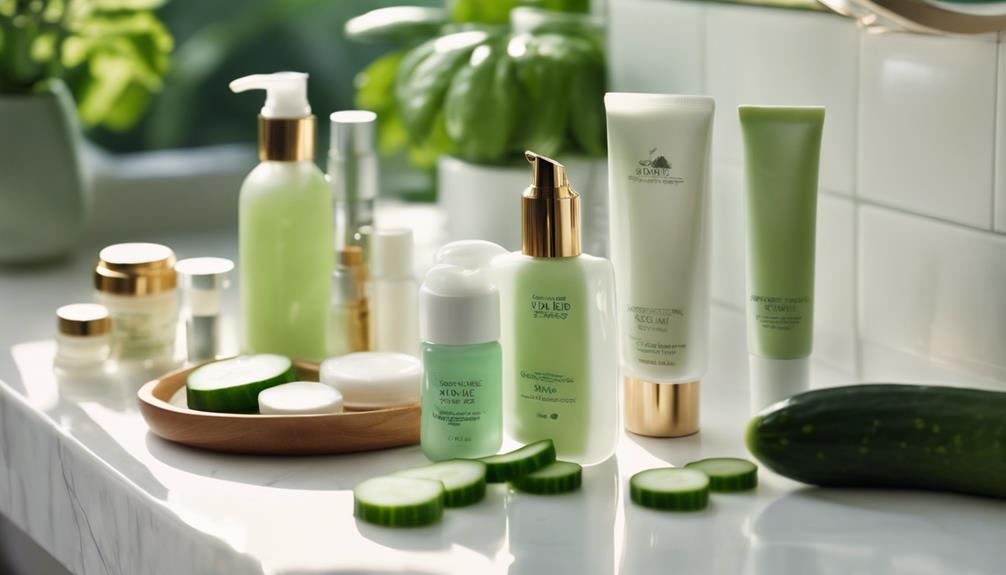
Eye creams offer targeted benefits for the delicate skin around your eyes, helping to reduce puffiness, dark circles, and signs of aging. This specialized product is essential in your skincare routine, ensuring your eye area looks refreshed and youthful each day.
Here are three key benefits of using eye cream:
- Reduces Puffiness and Dark Circles: Ingredients like caffeine improve circulation and provide a cooling effect, effectively reducing puffiness and dark circles that can make you look tired.
- Minimizes Fine Lines: Regular use of eye cream diminishes the appearance of fine lines and wrinkles, restoring a youthful appearance to your eyes. Hydrating components, such as hyaluronic acid, help maintain moisture levels, keeping the skin plump and smooth.
- Enhances Absorption: Applying eye cream before other products boosts absorption and effectiveness. It allows for targeted treatment of specific concerns, like crow's feet and fatigue.
Incorporating eye cream into your morning routine can considerably enhance the overall look and health of your delicate eye area, ensuring you start the day with a bright, rejuvenated face.
Moisturizer and SPF

Incorporating a daily moisturizer with SPF into your morning routine is vital for protecting your skin from harmful UV rays and keeping it hydrated. Choose a moisturizer that offers at least SPF 30 to effectively shield your skin from potential photo damage while also providing hydration. Look for lightweight formulas, especially during warmer months, so your skin feels fresh and won't become greasy.
A good daily moisturizer should contain ingredients like hyaluronic acid to enhance hydration levels and support your skin barrier function. This will help lock in moisture and keep your skin looking youthful.
Remember, even if your moisturizer has SPF, you still need to reapply every two hours for ideal protection. This is important in preventing premature aging and reducing the risk of skin cancers.
Products like Lancôme Renergie Multi-Lift Ultra Cream offer hydration and firming benefits while providing SPF 20, but pairing it with a higher SPF sunscreen is advisable for added protection.
Steps for Consistency
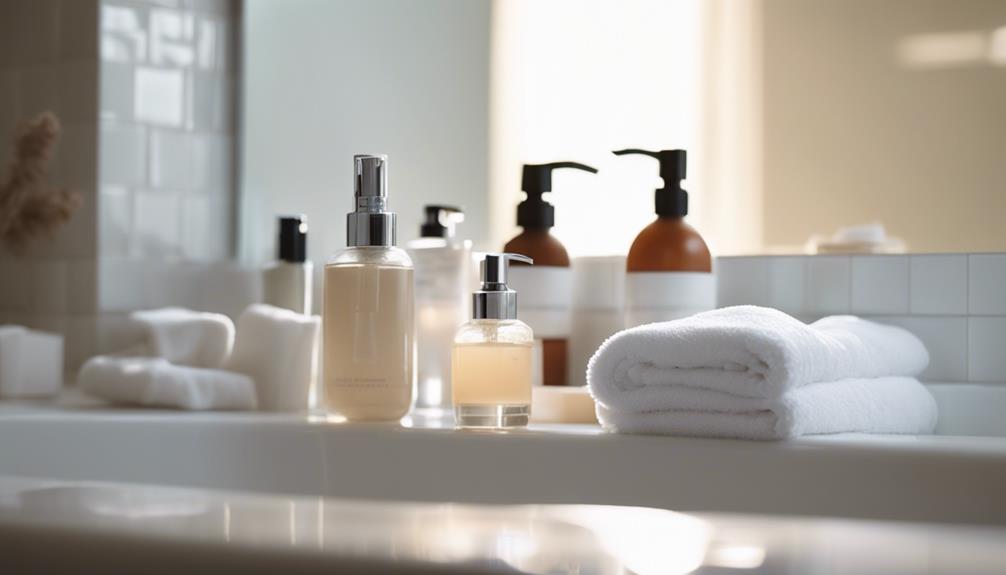
Making your skincare routine a daily habit can considerably enhance your skin's health and appearance. To achieve consistency in your morning regimen, consider these steps:
- Display Your Products: Keep your skincare products visible on your bathroom counter or vanity. This serves as a reminder to apply them daily and makes your routine feel more accessible.
- Incorporate Enjoyable Elements: Play your favorite music or listen to an engaging podcast while you go through your skincare routine. This adds an enjoyable twist that boosts motivation and helps you view your self-care ritual as a rewarding experience.
- Set a Schedule: Choose a specific time each morning to complete your skincare routine. By framing it as a non-negotiable habit, you reinforce its importance for your overall wellness.
Seasonal Adjustments
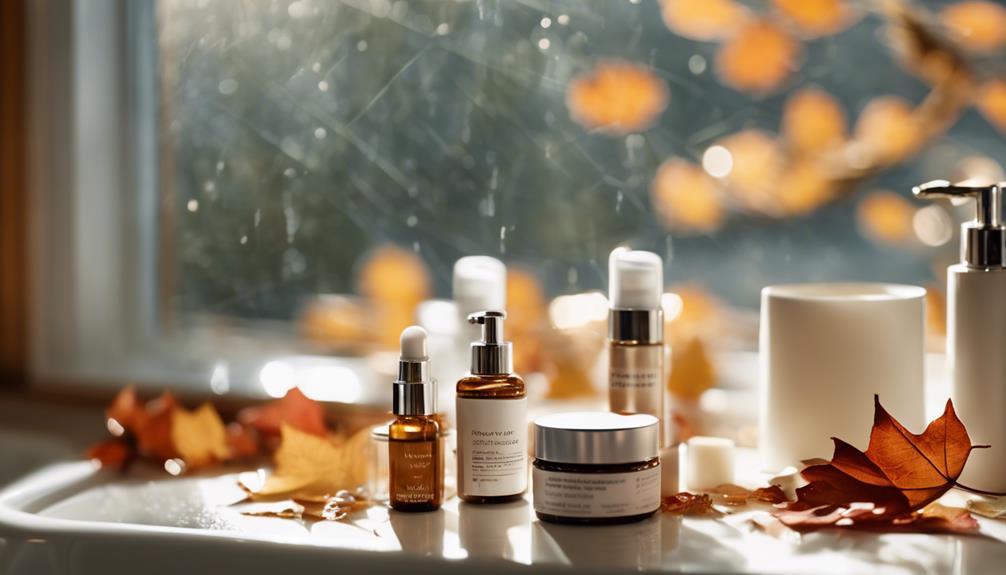
Seasonal changes demand that you adjust your skincare routine to meet your skin's evolving needs.
In winter, the air's dryness can wreak havoc on hydration levels, so incorporating richer, cream-based moisturizers is vital. These help combat dry skin and maintain your moisture barrier, keeping your complexion healthy and hydrated.
As temperatures rise and humidity increases in summer, switch to lightweight, oil-free products. These are less likely to clog pores or add excess shine, allowing your skin to breathe. Don't forget about SPF protection; using a broad-spectrum sunscreen with at least SPF 30 daily is significant in preventing sun damage.
Hormonal fluctuations can also impact your skin throughout the seasons, especially around menstruation. To manage breakouts during these times, consider adjusting your skincare routines, perhaps incorporating products with salicylic acid or other acne-fighting ingredients.
What are the key steps for a morning skincare routine to achieve a fresh face?
Start your morning skincare routine steps with a gentle cleanser to remove any overnight oil and dirt. Next, apply a toner to balance your skin’s pH levels. Follow up with a serum to target specific skin concerns, then use a moisturizer with SPF to protect your skin from sun damage.
Conclusion
By embracing a morning skincare routine, you're not just revitalizing your face; you're investing in your skin's health.
Did you know that 60% of skin aging is due to environmental factors? This highlights the importance of daily care, like using moisturizer and SPF.
Consistency is key, so stick to your routine and make seasonal adjustments as needed.
With each step, you're not only enhancing your appearance but also protecting your skin for years to come.
